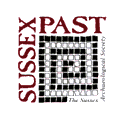Sussex Archaeological Collections: Relating to the history and antiquities of the counties of East and West Sussex
Sussex Archaeological Society, 2000. (updated 2022) https://doi.org/10.5284/1000334. How to cite using this DOI
Data copyright © Sussex Archaeological Society unless otherwise stated
This work is licensed under the ADS Terms of Use and Access.
Primary contact
Jaime
Kaminski
Sussex Archaeological Society
Barbican House
169 High Street
Lewes
BN8 1YE
Resource identifiers
- ADS Collection: 285
- DOI:https://doi.org/10.5284/1000334
- How to cite using this DOI
Sexing of Romano-British baby burials from the Beddingham and Bignor villas
by Tony Waldron, G. Michael Taylor & David Rudling

A simple method is described for measuring the depth of the sciatic notch in foetal ilia. In the pilot study presented, both morphological and molecular analyses were undertaken separately to determine the sexes of six Romano-British infant burials from the Roman villa at Beddingham, East Sussex and one from the villa at Bignor, West Sussex. We have attempted to establish a discriminant criterion by relating morphological findings to the sex as determined by amelogenin PCR.
Simple geometrical analysis of the sciatic notch indicated that of the six infant burials at Beddingham, three were female and three were male. Using the same criteria, the sex of the Bignor baby was determined as female. Amelogenin PCR was in agreement in four cases from Beddingham (three males and one female), but owing to poor quality of DNA, comparison was excluded in two remaining burials judged as female on morphological criteria. Similarly, owing to poor DNA preservation, PCR was negative with bone extracts prepared from the Bignor baby. If the burials at Beddingham were the result of infanticide, its victims were not exclusively female.





